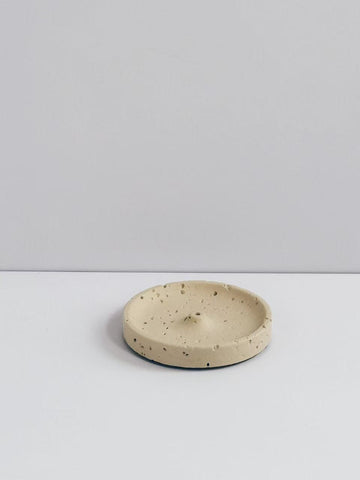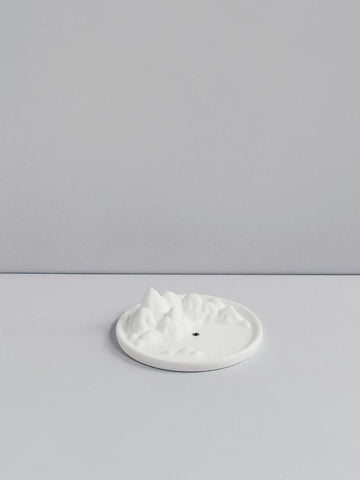The Soul of the Scented World, and the Sacred Wood of the East
There are perfumes that smell good, and then there is oud — a scent that transcends time, culture, and even language. Referred to as the “Wood of the Gods,” “Liquid Gold,” and “The Scent of Heaven,” oud (also known as agarwood) is not just a fragrance; it's an experience — spiritual, sensual, and deeply rooted in cultural tradition.
But what exactly is oud fragrance? Why is it so rare and revered? How does it differ from similar-sounding woods like ebony? And how does it connect to the incense traditions that stretch from ancient temples to modern mindfulness rituals?
Let’s dive into the rich world of oud — from its botanical origins to its place in incense, perfumery, and Eastern philosophy.
I. What Is Oud? A Fragrance Born of Scarcity and Transformation
Oud is a fragrant dark resinous wood formed when certain trees in the Aquilaria genus become infected with a specific type of mold (Phialophora parasitica). In response, the tree produces a dark, aromatic resin as a defense mechanism — gradually transforming its pale, odorless heartwood into a dense, fragrant material known as agarwood.
This rare transformation can take years, even decades. And only a small percentage of trees naturally go through this process. That’s why oud is so rare, and why pure oud oil or incense commands high prices.
After harvesting, the resin-rich wood can be:
-
Distilled into essential oil — the base for oud perfumes
-
Ground and shaped into incense sticks
-
Carved into chips and burned directly in ceremonies
The scent profile is highly complex and varies based on the tree species, environment, and age of the resin. Some oud smells sweet and balsamic, others leathery, smoky, or animalic, but all share an unmistakable depth — an ancient, dark warmth that lingers on the skin or in the air long after its source is gone.
II. What Does Oud Smell Like?
Describing oud is like describing a symphony in words — difficult, but not impossible. True oud has a multi-dimensional fragrance that evolves over time and can include:
-
Warm woody depth (similar to sandalwood, but richer)
-
Smoky incense notes
-
Dark leather and animalic musk
-
Sweet balsamic undertones
-
Earthy, spicy, and sometimes even floral hints
The experience of smelling oud is often described as meditative, grounding, and soulful — not just pleasant to the nose, but soothing to the spirit.
III. Oud in Perfumery: The Signature of Luxury
In the world of high-end perfumery, oud is the king of base notes. While many modern fragrances use synthetic oud accords, true natural oud oil is one of the most expensive raw materials in the world — often priced higher than gold.
Oud perfumes are:
-
Deep and long-lasting
-
Gender-neutral, appealing to both men and women
-
Popular in the Middle East, where layering oud with rose or amber is a cultural staple
-
Gaining popularity in the West, especially in niche fragrance houses
Famous oud perfumes include:
-
Maison Francis Kurkdjian Oud
-
Tom Ford Oud Wood
-
Acqua Di Parma Oud
-
Le Labo Oud 27
For those who wear oud, it is more than scent — it's identity, memory, and elegance.
IV. Oud and Incense: Smoke, Stillness, and Spirituality
Before oud was bottled in perfume, it was burned as incense — and still is. In Buddhism, Taoism, Shinto, and Sufism, agarwood incense holds sacred meaning. It is believed to:
-
Cleanse the air and mind
-
Focus meditation and prayer
-
Invite divine energy into a space
-
Calm the nervous system and promote clarity
In traditional Chinese and Japanese incense culture, agarwood (called 沉香 in Chinese, and Jinkō in Japanese) is regarded as the highest grade of incense wood, prized for its deep, silent fragrance. It is used in Kōdō (香道), the Japanese "Way of Incense," where the appreciation of scent becomes an art form — spiritual, poetic, and ephemeral.
This is why, even today, handmade incense using pure agarwood remains a cherished offering, not just a luxury item. Brands like Memoricall honor this tradition by creating natural, handmade agarwood incense sticks — where every burn brings the peace of a temple into your home. For a handcrafted incense experience, explore this natural agarwood incense made from Aquilaria sinensis — ideal for rituals, meditation, or creating a tranquil atmosphere at home.
V. Is Oud the Same as Ebony Wood?
Despite their similar dark appearance, oud (agarwood) and ebony are completely different:
| Aspect | Oud (Agarwood) | Ebony Wood |
|---|---|---|
| Botanical Source | Aquilaria trees (infected) | Diospyros species |
| Scent | Yes — highly aromatic | No fragrance |
| Use | Perfumes, incense, oil, spiritual rituals | Carvings, furniture, musical instruments |
| Cultural Role | Sacred, meditative, ceremonial | Decorative, durable |
| Market Value | High due to rarity and fragrance | High due to density and appearance |
In short: Oud is a fragrant spiritual treasure. Ebony is a beautiful but scentless wood. The two are not substitutes.
VI. Why Is Oud So Expensive?
Several factors contribute to the high price of oud:
-
Natural rarity — Only 1 in 10 Aquilaria trees may naturally develop resin.
-
Time-consuming formation — Resin develops slowly over years.
-
Over-harvesting — Many wild Aquilaria species are now endangered.
-
Sustainable cultivation is costly — Plantation-grown trees require care, artificial inoculation, and time.
-
Low yield — It takes 20–70 kg of agarwood to extract 12 ml of oud oil.
-
Labor-intensive process — From harvest to distillation, every step requires skill.
That’s why top-grade oud oil can reach $5,000 to $30,000 per kilogram. Even small handmade incense sticks made from natural agarwood are priced accordingly — because each one carries decades of quiet growth and ancient aroma.
VII. The Cultural and Spiritual Legacy of Oud
Across centuries and continents, oud has carried deep spiritual, poetic, and medicinal meanings:
-
In Arab culture, oud burning marks hospitality and celebration.
-
In China, agarwood is a traditional remedy and a Taoist spiritual aid.
-
In Japan, it is used in kōdō, the incense ceremony.
-
In India, it appears in Ayurvedic medicine and temple rituals.
-
In Southeast Asia, it’s called “gaharu” and used in both Muslim and Buddhist traditions.
Even modern science acknowledges agarwood’s calming effects on the nervous system, making it an ideal component in meditation, yoga, and wellness practices.
VIII. How to Choose and Use Oud Products
Not all oud is created equal. Here’s what to look for:
-
Natural vs. Synthetic: Real oud is rare; synthetic oud is common in perfumes.
-
Origin: Cambodian, Hindi, and Vietnamese ouds have distinct scent profiles.
-
Form: Choose from oud oils, perfume blends, incense sticks, or raw chips.
-
Craftsmanship: Handmade incense or artisan oils often provide a deeper experience.
To use oud:
-
In Perfume: Dab a small amount on pulse points; it lingers for hours.
-
As Incense: Burn gently on charcoal or use sticks in quiet spaces.
-
In Meditation: Let the scent guide breath, stillness, and awareness.
The Soul Behind the Smoke
Oud is more than fragrance. It is the memory of forests, the echo of temples, the breath of silence. In every wisp of smoke or drop of oil lies a story — of nature’s mystery, of human reverence, of time itself.
Whether you light a handmade incense stick or wear an oud-based perfume, you're not just enjoying a scent — you're participating in a tradition that stretches back thousands of years.
For those seeking an authentic incense ritual, this handmade agarwood incense captures the sacred calm of agarwood in its purest form — a tribute to centuries of tradition and inner stillness.









